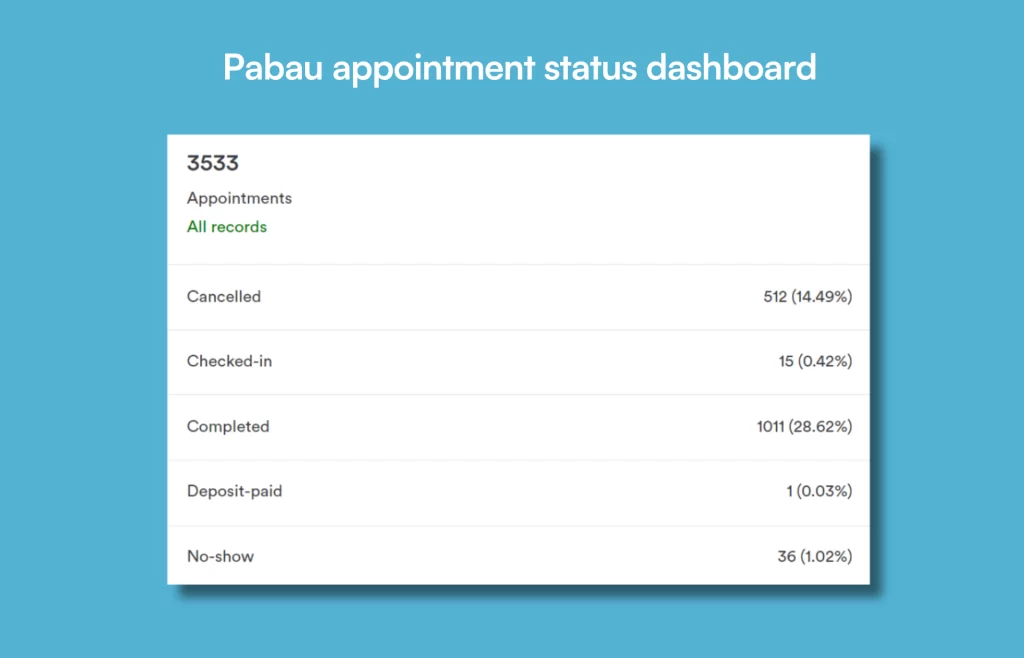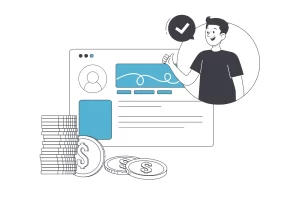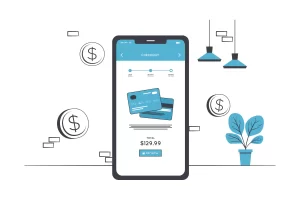Have you ever felt the frustration of prepping for a patient who never walks through the door?
No-shows are like that bad blind date that stands you up – a waste of time and a drain on resources. In healthcare especially, they’re a serious problem that can disrupt your clinic’s schedule, impact your bottom line, and even affect patient care.
If you’re looking for ways to tackle those empty appointment slots and optimize your clinic’s workflow, you’re in the right place.
This article will take a deep dive into patient no-shows, why it’s key to track no-show rates, and the most effective strategies to calculate and reduce them.
Let’s turn the tables on those missed appointments and get your schedule back on track!
What's a no-show rate?
Alright, let’s first clarify what we’re actually dealing with here.
The term “no-show” isn’t exclusive to a particular industry. A no-show is simply a client or patient who fails to appear for a scheduled appointment without providing any prior notice.
They ghost you, leaving an empty slot in your schedule and causing potential disruptions which are especially problematic in healthcare.
Think of one of your patients missing a crucial follow-up appointment, delaying their treatment or procedure. These missed bookings can negatively impact health outcomes but also affect your clinic’s bottom line.
In the context of clinics and healthcare practices, the no-show rate is a metric that shows you just how frequently these missed appointments occur.
It’s calculated as the percentage of patients that fail to arrive out of the total scheduled appointments, but we’ll explore that calculation in a later section.
But just how serious are no-shows? Let’s dive into some eye-opening statistics to understand the full impact they have on healthcare practices.
Do patients often miss their appointments?
It’s easy to brush off an occasional no-show. After all, life happens, and a missed appointment here or there doesn’t seem like a big deal. Right?
Well, not quite.
The reality is, no-shows are a pervasive issue in healthcare. Older industry averages ranged from 12% to a staggering 80%, with studies citing an average of 18.8%.
But even more recently, no-shows have been a major challenge.
A study in one of the largest radiology departments in the MENA (Middle East and North Africa) region found no-show rates ranging from 10% for quick and simple procedures X-rays to over 80% for MRI scans.
Now, your clinic might not be facing the extreme high end of the scale. However, even a seemingly “low” no-show rate can disrupt your schedule, waste staff time, and impact revenue. Being aware of the prevalence of this issue allows you to take proactive steps to minimize its impact on your practice.
Facts & stats about no-shows
The consequences of no-shows ripple far beyond just an empty appointment slot. They can drain your clinic’s resources, affect patient care, and even hurt your bottom line. Consider these numbers:
- Almost half (49%) of medical groups reported increased patient no-show rates since 2021
- When patients miss appointments, it interrupts their treatment plans and diagnosis. This can lead to worsening health conditions and increase the risk of costly emergency room visits.
- Missed appointments create long wait times for other patients, leading to frustration and a negative patient experience.
- Telehealth no-show rates are 7.5% compared to 36.1% for in-office appointments
- $150,000 is the average revenue lost by a single healthcare provider’s medical practice each year due to patient no-shows.
Finally, there are various reasons patients might miss their appointments, including forgetting, scheduling conflicts, transportation issues, and even feeling too unwell to attend.
These stats and facts are nice benchmarks to keep in mind, as they can be used to evaluate the effects no-shows have at your clinic.
Why you should track the no-show rate
Imagine you’re a detective, trying to solve a case of disappearing patients.
Okay, maybe that’s a bit dramatic, but tracking your clinic’s no-show rate is really important for getting to the root of your problems.
The issue is not solved by tracking individual patients who missed their appointments. Instead, by regularly monitoring no-show rates you can get valuable insights, like:
- Spotting trends: Are no-shows higher on certain days, at specific times or with particular providers and specific treatments? Analyzing trends helps you identify areas where your scheduling or communication needs a tune-up.
- Improving patient communication: High no-show rates could mean your appointment reminder systems aren’t working (if you have any in place), or that certain patients need more personalized attention. Use data to refine patient engagement and reduce missed appointments.
- Optimizing scheduling: Maybe your scheduling strategy needs a refresh. You can explore whether shorter appointment windows, flexible online scheduling options, or even different communication channels like SMS and email help improve attendance.
By keeping a close eye on your no-show rate, you’re essentially feeling your clinic’s pulse and taking control of your scheduling, patient care, and revenue.
What’s the business cost of missed appointments?
We’ve already touched on the negative consequences caused by no shows.
But did you know that this issue costs the healthcare industry $150 billion annually? These are scary numbers. But what does that translate to for your clinic?
Imagine you charge an average of $200 per appointment. If just five patients miss their appointments each week, that’s $1,000 in lost revenue. Over a year, that could add up to over $50,000 – a significant chunk of potential earnings.
And that’s just the tip of the iceberg.
No-shows impact your operational efficiency – wasting your staff’s time preparing for appointments that never happen, tying up important equipment that could be used for other procedures, and causing delays and frustrating everyone involved.
Tracking the number of no-show appointments reveals the financial toll for your business and can hopefully help you mitigate it.
How to calculate your patient no-show rate?
OK, let’s now take a look at the calculation itself.
Figuring out your no-show rate isn’t as daunting as it might seem. It’s a simple calculation that can reveal valuable insights into your clinic’s performance.
Here’s the basic formula:
No-Show Rate = the number of MISSED appointments you had divided by the TOTAL number of appointments and then multiplied by a hundred.
Let’s take a look at an example of how this formula works. Say your clinic had 400 scheduled appointments in a month, and 30 of those were no-shows.
Your no-show rate would be calculated as 30 divided by 400 multiplied by 100 = 7.5%
This means that you have a 7.5% no-show rate, or that 7.5% of your total number of appointments were missed that month.
Here are some tips while calculating your own rates:
- Define a no-show: Decide whether you’ll include last-minute cancellations or only missed appointments in your calculation. Be consistent in your definition.
- Track consistently: Choose a tracking period (daily, weekly, monthly) and stick to it. This allows for easy comparison over time.
- Use software: Clinic management software like Pabau can simplify no-show tracking, displaying the number of no-shows on our intuitive dashboard.

Consistent and accurate no-show tracking is crucial for understanding the impact on your clinic and implementing effective solutions.
Top 7 ways to decrease patient no-shows
Now that you know how to calculate your no-show rate, what if it’s higher than you’d like? Don’t worry, we’ve got you covered!
in the next seven sections, we’ll highlight some of the most effective tactics for reducing patient no-shows.
While some of these strategies, like charging fees or taking deposits, might feel uncomfortable and you might worry about negatively impacting patient relationships, we encourage you to keep an open mind.
It’s important to approach no-shows with a pragmatic business mindset as each missed appointment costs your clinic valuable time and resources, impacting your ability to provide quality care to other patients.
Use automated reminders
Did you know that a whopping 37.6% of patients who end up being no-shows simply forget about their appointments?
That’s a massive chunk of your schedule going to waste! Automated reminders are a simple yet powerful way to combat forgetfulness. Whether it’s an email a few days before the appointment or a text message the morning of, these gentle nudges keep your clinic top-of-mind and dramatically reduce no-shows.
For maximum effectiveness, customize your reminders:
- Include key info about their appointment like the date, time, and practitioner for easy reference.
- Use both email and SMS to make sure the message reaches your patients.
- Include links or buttons that make it easy for clients to confirm their appointment or reschedule if needed.
Charge no-show fees
While it might feel uncomfortable at first, charging no-show fees can be an effective deterrent, particularly for repeat offenders.
This practice typically involves collecting and securely storing the patient’s credit card information, and charging a fee (ranging from a small amount to the full appointment cost) if they fail to show up.
However, consider alternative options like upfront deposits, which are refundable upon attendance and can also discourage no-shows.
Whether you choose fees or deposits, clear communication is key.
Be transparent about your policy during booking and in confirmations. You can also implement a sliding scale of fees (lower for late cancellations, higher for no-shows) and offer flexibility for first-time offenders or special circumstances.
Use more ways to communicate
Don’t rely on just one communication channel. Mix it up!
Some patients might prefer a friendly email, while others are more likely to see a text message reminder. By offering reminders through multiple channels, you increase the chances of your message getting through and reducing no-shows.
Here are a few tips:
- When in doubt, ask your patients how they prefer to be contacted for reminders.
- Time it right by sending a reminder a few days in advance, then a final reminder the day before or even a few hours before the appointment.
- Include patient names, appointment details, and any specific instructions about your clinic’s address and where to park to avoid confusion.
Educate patients on policies
Patients need to understand your expectations upfront to avoid misunderstandings.
You want to make your booking and cancellation policies easily accessible on your website and include them in appointment confirmations as a reminder.
Ideally, patients should read your policy before making an appointment, and Pabau’s online booking features can make this process easy. Take a look at how aesthetic clinic Secret Enhancements used this feature in the screenshot below.

Ideally, patients should review these policies before booking. Pabau’s online booking features make this simple by allowing you to create and display policy pages right on your booking portal.
Also, if a client attempts to cancel a booking, they’ll receive a clear warning about any applicable cancellation fees. If they cancel or end up being a no-show, Pabau automatically deducts any fees from their saved credit card, saving you time and ensuring consistent policy enforcement.
Make re-scheduling for patients easier
Sometimes, patients have emergencies, sudden schedule changes, or simply forget to update their calendars.
If it’s difficult for them to reschedule, you’re practically forcing them into becoming a no-show. After all, who wants to call and explain their entire situation to an already busy front office employee?
Instead, make rescheduling a breeze with these tips:
- Allow patients to reschedule directly through your website or booking app.
- Include links in your text and email reminders so they can quickly modify their appointments with just a click or two.
- If possible, offer a range of alternative appointment times to accommodate busy schedules.
Remember, a flexible and easy-to-use rescheduling process shows you value your patients’ time, which builds goodwill and reduces the likelihood of no-shows.
Create a process for handling no-shows
While the goal is to prevent no-shows in the first place, having a well-defined process for when they do occur is crucial.
A consistent approach ensures fair treatment for patients and protects your clinic’s time and resources. Here’s what your process might look like.
As soon as you know a patient has missed their appointment, mark it as a no-show in your system. If you have a deposit or cancellation fee policy, initiate the charge according to your established guidelines.
Tip: For first-time offenders, a simple phone call or email to inquire about the missed appointment can be a helpful first step.
Afterward, send a “we missed you” email or text message and gently remind them of your cancellation policy and the no-show fees they might have incurred. Offer to reschedule the appointment at their convenience.
Tip: For repeated no-shows, consider a more direct conversation about the impact of missed appointments on your clinic’s ability to provide care.
Finally, try to keep detailed records of each no-show incident, including date, time, reason (if known), and any follow-up communication, as it can be invaluable for identifying trends and adjusting your overall scheduling or communication strategies.
While consistency is important, there may be valid reasons for a no-show. Be prepared to make exceptions for extenuating circumstances, such as unexpected emergencies.
Get feedback from missed patients
As a final step in your no-show management process, consider reaching out to patients who missed their appointments to gather feedback.
This is an optional but quite important step, as understanding their reasons for not showing up can offer valuable insights.
Was there a misunderstanding about the appointment time? Did something unexpected come up? Were they dissatisfied with a previous visit?
By collecting feedback, you can identify recurring issues and take proactive steps to address them. This shows patients that you value their input and are committed to improving their experience, potentially leading to a rebooking.
Remember, when requesting feedback, be respectful and avoid accusatory language. Instead, approach the conversation with curiosity and a genuine desire to understand their perspective. You might be surprised at the valuable information you uncover!
How Pabau can help reduce your no-show rate?
With that, we’ve unpacked the nitty-gritty of patient no-shows, understanding their impact and exploring strategies to minimize them.
We hope you now understand this common issue and are better equipped with actionable tips you can implement right away.
And hey – as we hinted at throughout our article, practice management software like Pabau can be a powerful ally in the fight against no-shows.
With Pabau, you can:
- Secure bookings with appointment deposits, ensuring clients have “skin in the game” and reducing the likelihood of no-shows.
- Send automated email and SMS reminders so appointments stay top-of-mind for your clients.
- Implement and easily enforce cancellation policies and automatically charge fees when needed to recoup costs.
Pabau’s features work together to create a smoother client experience, reduce no-shows, and ultimately help your clinic thrive.
Want to learn more? Schedule a demo and see how Pabau can transform your practice management process.




